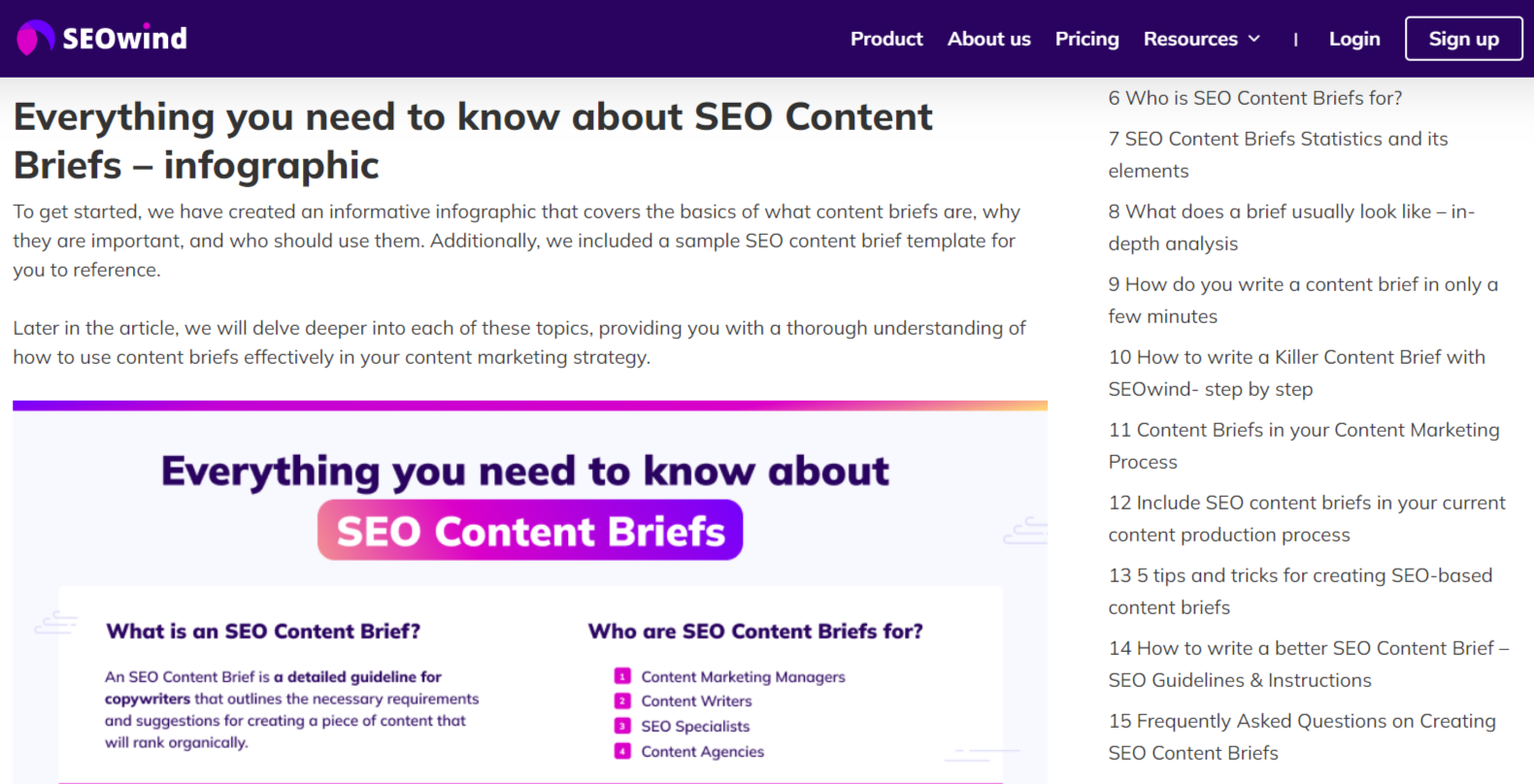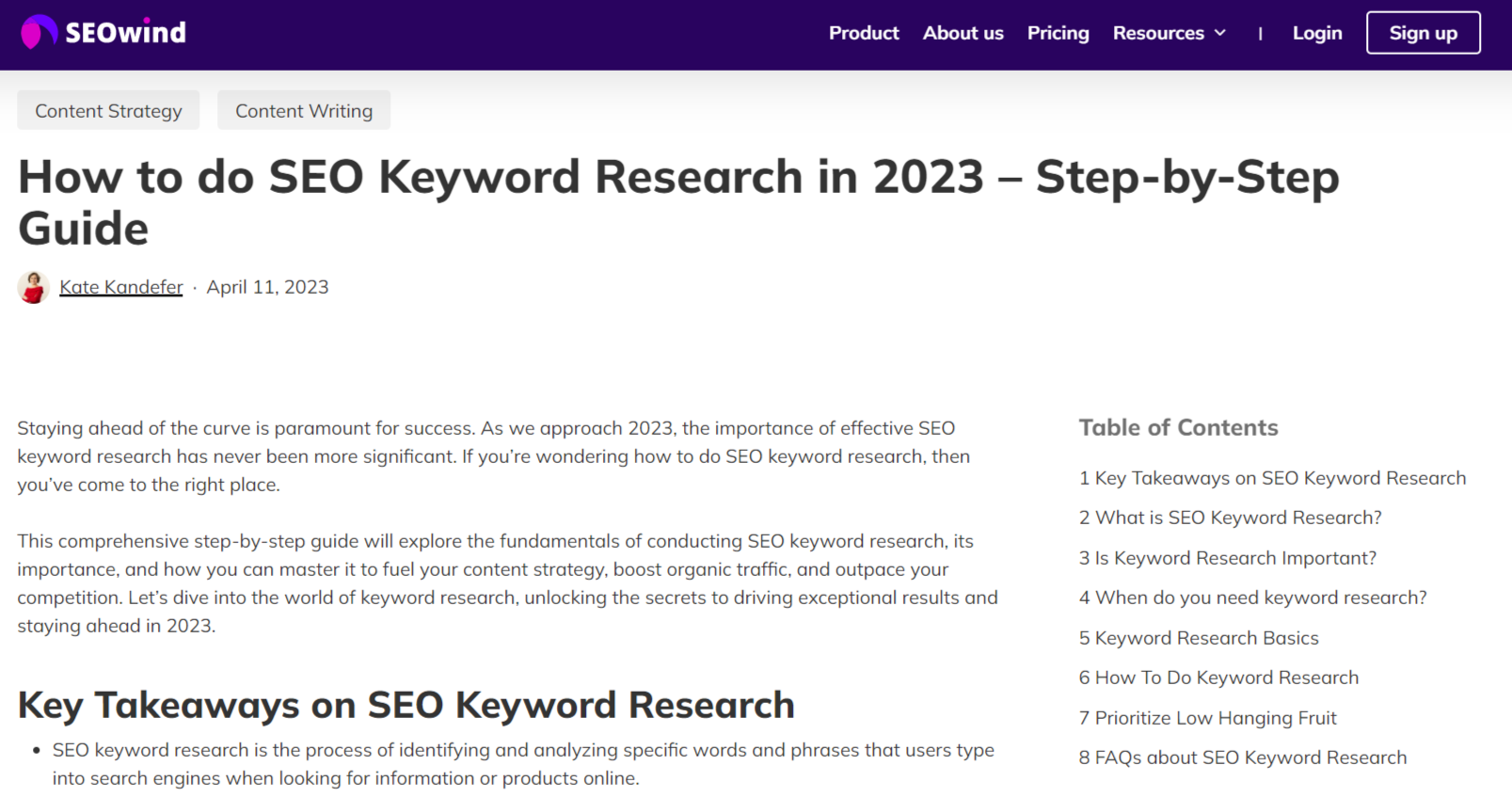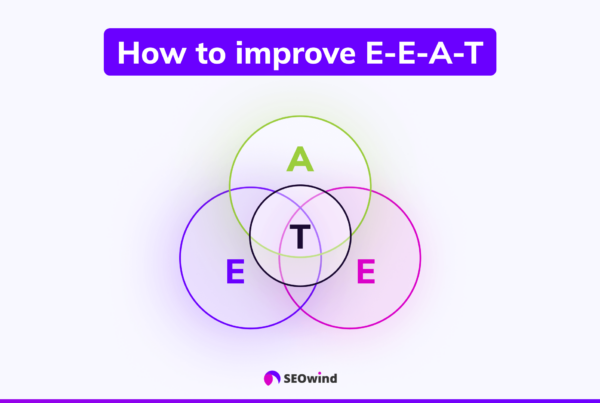The use of pillar pages gains traction among SEO professionals. It can help drastically improve your website’s search engine visibility and establish your brand as an authority in your niche. Intrigued? Stick around as we dive deeper into leveraging pillar pages for increased SEO visibility. Discover how you can create your very own game-changing pillar page.
What is a Pillar Page?
A pillar page is a comprehensive piece of content that covers all aspects of a specific topic in depth. It serves as the foundation or “pillar” for subtopics related to that primary subject area; these supporting materials are known as cluster content or topic clusters. The idea behind it is to encapsulate valuable information on a given topic efficiently. This way making it simpler for users to navigate and consume extensive knowledge without hassle.
Why is it called a Pillar Page?
The term “pillar page” comes from its characteristic function: acting as a strong, central foundation for an array of well-organized, interrelated topics within your site’s content ecosystem. Just as pillars support structures like buildings, this master resource holds up all relevant supplementary content connected through internal links with each cluster page linking back to the main page. This tightly-knit structure not only provides readers with a more coherent user experience but also signals search engines about the breadth and depth of your expertise on the subject matter. This ultimately boosts your site’s SEO performance considerably.
Benefits of Pillar Pages for search engines

Leveraging pillar pages and topics, in your content strategy brings significant advantages to your website’s search engine optimization (SEO). By focusing on a comprehensive approach that covers essential aspects of a subject or niche, you can improve organic reach, enhance internal linking, and showcase authority. Here are some key benefits:
Increased Organic Traffic
One primary purpose of SEO is to drive more organic traffic to your website. With well-researched and structured pillar pages that target high-volume keywords, it becomes possible to rank higher in search results. Consequently, increased visibility will lead to better click-through rates and engaged users on the site.
Enhanced On-Site User Experience
Understanding how visitors navigate through your site is crucial for improving their overall experience. Pillar pages allow you to create organized, easily navigable content that guides users intuitively. As a result, visitor satisfaction increases as they find precisely what they need without feeling overwhelmed or lost.
Improved Internal Linking Structure
An effective internal linking strategy strengthens your website’s SEO capabilities by connecting relevant content pieces while also serving the user’s needs on-site. Creating pillar pages offer an excellent opportunity to establish robust internal links between related resources and supporting blog posts. This optimal structure not only enhances usability but also ensures the even distribution of link equity across associated content.
Greater Domain Authority
With authoritative and expertly crafted pillar pages addressing specific topics within your niche, you instill trust and credibility among readers and search engines alike. In turn, building domain authority helps attract valuable backlinks from other reputable sources – a factor Google takes into account when ranking websites.
Better Content Organization
Using pillar pages as main hubs within topic clusters aids in organizing large quantities of information present on your site more effectively than standalone articles would achieve. It promotes cohesive structuring across various subjects, making it simpler for both end-users and search engines to understand the scope of presented knowledge.
Adaptive to Changes in Search Engine Dynamics
Pillar pages and their associated topic clusters are designed to cover various subtopics, allowing them to remain relevant when Google’s algorithms change. This approach ensures that you can quickly adapt content as search engine requirements evolve and maintain SEO success even with dynamic market trends.
How Can Pillar Pages Help Your SEO?
I understand the crucial role that effective search engine optimization (SEO) strategy plays in driving organic traffic to your website. Let’s dive into how pillar pages can help you achieve increased visibility and improve your overall online presence.
SEO Pillar Pages Improve Site Structure
A well-structured website provides users with a seamless browsing experience, making it easier for them to find relevant information quickly. Pillar pages organize content into topic clusters, which are connected through internal linking. This structure not only makes navigation effortless but also helps search engines understand and index your content more efficiently. As a result:
- Google and other search engines reward websites with clear hierarchies, leading to potentially better search rankings.
- A well-organized site keeps visitors engaged longer, reducing bounce rates.
- An intuitive layout leads to improved user experience, significantly enhancing the chances of conversions.
It’s Easier to Rank for High-Volume Keywords
Pillar page best practices emphasize that targeting high-volume keywords – terms frequently searched by users in search engines – make ranking for them substantially more manageable. The comprehensive nature of these pages allows you to cover various aspects of a chosen topic while incorporating multiple related high-volume keywords strategically placed throughout the website page content.
When implemented effectively, this tactic increases the likelihood of ranking higher on Google search engine results pages (SERPs), driving increased organic traffic and ultimately boosting conversion rates.
Pillar and Cluster Pages Showcase Your Expertise
In addition to improving site structure and allowing you to rank for high-volume keywords easily, pillar pages enable you to demonstrate your expertise within your niche or industry. By providing valuable insight on relevant topics clustered around a central theme, you establish credibility among readers who view your website as an authoritative source of information.
Showcasing your expertise through pillar and cluster pages has several essential benefits:
- Google takes E-A-T (Expertise, Authority, and Trustworthiness) into account for ranking purposes; thus, high-quality content by industry experts is more likely to receive better search rankings.
- Establishing topical authority in a niche enhances brand credibility, fostering trust among potential customers.
- Industry influencers may recognize your expertise and share your content within their network – expanding the reach of your website.
How long should a Pillar Page be?

Determining the ideal length for a pillar page is crucial to ensure that it effectively showcases your expertise, ranks well in Google search engines, and provides value to your audience. While there isn’t a one-size-fits-all answer, as the length may vary depending on various factors such as industry standards and specific keyword and topic requirements, below are some insights to help guide you in crafting an optimized pillar page.
The ideal length for the content pillar
HubSpot analyzed their top-performing blog posts and here is what they found (HubSpot, 2020). This is what they found out:
- Pillar pages should be around 4,000 words.
- Most read pillar pages had an average of 4,048 words and a median length of 3,639 words.
- Word lengths for these pillar pages ranged from 2,137 to 10,939 words.
Comprehensive coverage of the topic
A pillar page should provide extensive information about its core topic in order to establish itself as an authoritative source. This could involve more detailed queries, delving into subtopics, addressing pain points or common questions, and presenting data-backed insights when relevant. Consequently, these pages often exceed 2,000 words in length. However, ensuring the content remains valuable and engaging throughout should take precedence over reaching a specific word count.
Considerations based on user intent
Understanding the searcher’s intent behind specific keywords can give you invaluable guidance on how long your pillar page should be. Analyzing competing content that already ranks well for these keywords will indicate user preferences when it comes to searching for information within your niche. By following suit without necessarily duplicating their approach – i.e., creating something unique yet comprehensive – you’ll enhance your chances of ranking higher.
Note: You don't need to analyze the competitor's content manually. You can use tools like SEOwind to get all the data in one place.

Content formatting elements
Pillar pages may typically be longer than many individual articles but bear in mind: readers can easily get overwhelmed by large blocks of text. Therefore:
- Utilize headings and subheadings to break up content and make it easy to scan.
- Use bullet points or ordered lists (where appropriate) for summarizing key points.
- Include images or visual aids like diagrams and infographics when applicable.
- Use white space strategically to prevent clutter within your work.
By focusing on readability through proper formatting and organization across dense material — even upwards of 4,000 words — you will facilitate quick and seamless navigation for visitors.
Ultimately, the length of a pillar page should be determined by your ability to comprehensively cover the chosen topic while delivering value at every stage. Offering quality content remains a top priority; prioritize this over meeting an arbitrary word count requirement.
Types of Pillar Pages
Understanding the different types of pages can help you strategically select the right kind to create for your brand. Each type serves a unique purpose, and choosing the most appropriate one depends on your target audience’s needs and your overall content marketing goals. Here are three common types of pillar content:
Guide Pillar Pages
Guide pillar pages comprehensively cover a specific topic or theme, offering in-depth information and structured subtopics. It propels readers through every aspect of a particular topic or subject while providing valuable insights, tips, and best practices along the way.
Some characteristics of guide pages include:
- Comprehensive coverage of a single topic
- A clear organization with a table of contents
- Numerous internal links directing users to related resources within your website
- Inclusion of statistics, research findings, case studies, charts, images, etc.
Our content "Everything you need to know about SEO Content Brief – Ultimate Guide" is a guide pillar page content.
- It is a comprehensive piece of content, with a table of contents, and clear structure.
- It has stats, charts, videos, and infographics.
- It links to other pages covering related topics.

What-Is Pillar Pages
What-Is pillar pages aim to thoroughly explain complex concepts or industry-specific terms. By clarifying jargon and breaking down intricate ideas into easily understandable segments, these pages offer immense value to beginners exploring unfamiliar territory. Moreover, they establish your brand as an authority in the field by demonstrating subject expertise and catering effectively to diverse visitor needs.
When creating a What-Is page:
- Explain technical terms with simplicity
- Break down complicated concepts step-by-step
- Provide context by showcasing relevant examples or anecdotes
- Include diagrams or visuals for additional clarity
Remember that search engine optimization is crucial when developing this type of content: researching relevant keywords ensures that users searching for answers will find your page amidst the vast expanse of digital information available online.
How-To Pillar Pages
How-To pillar pages present actionable steps guiding readers through a process or project, enabling them to accomplish tasks with relative ease. These educational resources typically combine text-based instructions and visual elements like images, videos, infographics, or GIFs for comprehensive understanding.
To create an effective How-To pillar page:
- Begin by choosing a specific, high-demand topic relevant to your niche
- Divide the process into small, manageable steps
- Prioritize clarity and conciseness when offering guidance
- Incorporate multimedia visuals whenever possible
The goal here is to make complex processes as user-friendly as possible for a wide range of audiences – and in doing so, demonstrate the depth of your brand’s knowledge while fostering trust among visitors.

Selecting the right type of pillar page aligns closely with your content marketing strategy and goals, and ensures that you cater effectively to user needs. By differentiating between Guide, What-Is, and How-To pillar pages – each fulfilling unique objectives – brands can establish authority within their industries while simultaneously boosting their search engine rankings and visibility through strategic SEO practices.
Create Pillar Pages
To make the most of this powerful SEO strategy, it is crucial to understand the process behind creating an effective pillar page. In this section, we’ll go through five essential steps in developing a successful pillar page that boosts your website’s visibility and authority.
Decide on the Topics You Want to Rank For
The first step in creating a pillar page is to determine which topics you want to rank for on search engines. This should involve some research into your niche or industry, as well as an assessment of your existing content. Ideally, choose topics that are relevant to your target audience and can showcase your expertise. Additionally, consider which subjects have high search volume, yet low competition – these will maximize the potential benefits of implementing the pillar page strategy.
Conduct Keyword Research
Once you have identified the central topic for your pillar content, conduct thorough keyword research using reliable tools such as Ahrefs, Semrush, or SEOwind. The goal here is to find potential long-tail keywords and subtopics related to your main subject, each with adequate search volume and ideally low competition levels. These results will help inform your content creation process by identifying vital secondary keywords and phrases that both demonstrate relevance to users and appeal to search engine algorithms.
Structure Your Cluster Pages
After finalizing the list of relevant keywords and subtopics, it’s time to structure these elements into organized clusters around your primary topic. This framework is often referred to as “topic cluster model.” Each topic cluster strategy typically comprises several pieces of supporting blog posts linked back directly or indirectly to the core pillar page addressing their overarching subject matter.
When structuring your cluster:
- Identify the main overarching topic (pillar page content)
- Compile subtopics or supporting articles by creating a pillar page outline
- Prioritize clarity by using headings and concise summaries
- Ensure logical organization with easily navigable links between related materials.
Create Pillar Page Content for the Web Page
With your topic clusters established, now comes the crucial task of creating high-quality content that covers various aspects of each subtopic in depth. Use a consistent, professional tone to convey valuable information and insights to your audience while remaining accessible to beginners.
Ensure that:
- Your content is original and free from duplication
- Subheadings are employed strategically to break up the text for readability
- Jargon is minimized or explained as needed within the body
- Proper formatting and multimedia elements (such as infographics or videos) are used for enhanced user experience.

Upload the Web Page and Add Internal Links
Finally, upload your new pillar page by incorporating it into your website’s main architecture – typically found under the “Resources” or “Guides” sections. Be mindful of providing links between this central hub and all pertinent pieces forming the topic clusters mentioned earlier in your research.
Once live, add strategic backlinks on those related subtopics pointing back to their respective pillar page(s). This process ultimately strengthens site structure and increases the visibility of valuable content pieces, thereby improving overall SEO rankings.
Optimizing Your Pillar Page
To make the most out of your pillar page, it’s important to pay close attention to content optimization. This involves conducting thorough keyword research, writing high-quality content, and strategically incorporating internal links. Below are some guidelines for optimizing your pillar page.
Conduct Keyword Research
Effective keyword research is a critical component of any successful SEO strategy. To optimize your pillar page:
- Identify the primary keyword that you’d like to rank for using various keyword research tools such as Google Ads Keyword Planner, Ahrefs, or Moz.
- Focus on including 3-5 similar clustered keywords in each section of your article from the list provided above.
- Analyze competitor performance for specific keywords to determine how effectively they have optimized their content and identify potential gaps in their strategies.
- Consider long-tail keywords related to your primary focus topics, which often have lower competition levels and provide better opportunities to target niche audiences.
Write Quality Content
Top-notch content is what will set your pillar page apart from others and keep users engaged longer on other pages of your site. Here are a few tips for crafting high-quality content:
- Write with simplicity: Make sure your content is easy-to-understand with clear and concise language that conveys the intended message effortlessly.
- Use subheadings: Break paragraphs into smaller sections using headings, which improves readability and helps search engines understand the structure of your content.
- Incorporate multimedia elements: Sprinkle visuals like images and videos throughout the text when appropriate; this aids in breaking up large blocks of text, thus increasing reader engagement.
- Edit rigorously: Meticulously proofread and edit every piece you write before publishing it online – errors can undermine its credibility significantly.
Add Internal Links
Capitalize on strategic internal linking within both the main body of your pillar page and accompanying cluster pages:
- Link from relevant existing blog posts or other resources to your pillar page; this not only helps with transferring link equity but also guides users toward your comprehensive resource.
- Take advantage of inbound links embedded within individual topic clusters or subtopics; these allow readers to navigate seamlessly between sections and enhance user experience while demonstrating topic relevance and topical authority to search engines.
- Utilize anchor text that includes related keywords to establish relevance for the target focus subject, which further strengthens your optimization efforts when implemented effectively.
- Lastly, be mindful not to overstuff internal links – including too many may negatively impact readability and compromise user experiences.
By optimizing each facet of the pillar page – from keyword research and well-crafted content to strategic link building – you’ll substantially improve its overall performance and increase SEO visibility, thereby benefiting your brand in numerous ways.
Pillar Pages and Internal Linking Strategy

A strong internal linking strategy is vital for SEO success, aiding search engines in comprehending relationships between your website’s content. Pillar pages are central hubs connecting related subtopics or cluster content, playing a crucial role in this strategy.
In this section, we’ll delve into how pillar pages can significantly improve your internal linking structure.
The Importance of Internal Links
Internal links serve several important functions:
- They help users navigate your website and discover new content.
- They evenly distribute link equity (SEO value) among connected pages.
- They establish a coherent site hierarchy and overall architecture.
By effectively utilizing links to create topic clusters around a central pillar page, you’re ultimately making it easier for both search engines and users to understand your site’s organization and find value in your content.
Building Pages and Topic Clusters
The key to a successful single-pillar page strategy lies in its ability to create relevant connections between the main pillar page and its associated cluster content (blog posts, articles, etc.). To achieve this:
- Identify high-quality pieces of content within your website that closely relate to the primary topic discussed on the pillar page
- Make sure that each piece of supporting cluster content focuses on one specific subtopic or long-tail keyword
- Add an internal link from each supporting piece back to the main pillar page using descriptive anchor text that reflects their respective subtopics
Additionally, don’t forget to update existing content with links pointing toward your new pillar page so as not to leave any promising connection opportunities untapped.
Balancing Topical Relevance with User Experience
While it’s essential to have an organized internal linking structure powered by topical relevance, never sacrifice user experience for purely SEO reasons. When implementing an internal linking strategy with a focus on pillar pages:
- Ensure that the links added are contextually relevant and add value to the reader’s experience
- Avoid overloading pages with excessive internal links; focus on quality, not quantity
Striking a balance between providing value through strong topical connections and enhancing user experience is imperative for any successful SEO strategy.
Monitoring and Adjusting Your Internal Link Strategy
Finally, remember that your website’s internal link structure should always remain adaptive as you create new content or modify existing material. Make it a habit to periodically analyze the performance of your pillar pages and supporting cluster content using analytics tools. Keep an eye on metrics like organic traffic, bounce rate, and time spent on-page as indicators of how well your pillar page-focused internal linking strategy is performing. Based on these insights, make adjustments as needed to consistently drive increased visibility in search engine results.
Using Data to Map Out Content for a Pillar Page
Developing an effective pillar page requires strategic planning, as well as data-driven insights. In this section, we’ll explore two approaches to mapping out content for a successful pillar page: starting from scratch and utilizing top-performing existing content.
Plan a Pillar Page from Scratch
When creating a new pillar page from the ground up, it’s essential to follow these steps:
- Define your target audience: Identify your ideal customers or readers, and consider their needs, pain points, and interests. Defining your audience will help you create relevant and engaging material.
- Select a broad topic: Choose a comprehensive subject related to your industry that resonates with your target audience. This overarching theme should encompass several subtopics that you can cover in your cluster content.
- Keyword research tools: Use trustworthy tools such as Ahrefs, Semrush, or SEOwind to gather relevant keywords surrounding your chosen topic. These keywords should come in varying search volumes and levels of competition.
- Identify potential topics for cluster content: Based on the discovered keywords, select specific subtopics to serve as supporting articles within the topic clusters. Ensure that each subtopic explores various aspects of the primary subject matter.
- Analyze competitor content: Review similar pillar pages and supporting posts by other businesses in your niche in order to gain insight into what works best (and what doesn’t) within the industry.
Create a Pillar Page from Top Performing Content
If you’ve already published high-quality blog posts or resources on your website, you can leverage this existing content while devising a solid pillar page strategy by following these steps:
- Assess current high-performing posts: Track down popular pieces of content on your site using tools like Google Analytics or other web analytics software.
- Determine topic relevance amongst top performers: Analyze the subject matter of these high-performing pieces to identify common themes that can be incorporated into a broader pillar page topic.
- Identify any content gaps: Evaluate top-ranking posts thoroughly to determine if there are any vital subtopics missing or underexplored, which could be developed as supporting articles within a cohesive topic cluster.
- Optimize existing content for SEO: For each selected piece of content, perform an audit to ensure it aligns with current SEO best practices, such as proper keyword usage and internal linking strategy.
- Create an organized structure: Develop a logical and effective site structure by interlinking your best-performing articles to form a comprehensive network surrounding the central pillar page.
By keeping in mind data-driven decision-making while mapping out your pillar pages, you’ll bolster your SEO success and ultimately enhance your online visibility.
Pillar Page Planning Templates and Resources
Before diving into creating a pillar page, it’s essential to have a plan and leverage available resources to ensure success. By using templates and other available resources, you can streamline the process of designing your pillar page, organizing your content, and implementing a comprehensive SEO strategy.
Pillar Page Templates
There are various pillar page templates accessible online that can help you design an effective layout for your content. While some pillar pages rely on long-form written material, others integrate multimedia elements such as videos or infographics. When searching for a template, look for one that:
- Aligns well with your industry or niche
- Provides an easy-to-navigate structure
- Complements your existing website design
Additionally, consider these key components while selecting a template:
- Mobile responsiveness for optimal user experience across devices
- Visual hierarchy to guide users through the content effortlessly
- Clear call-to-action buttons or forms to increase conversion rates
Content Planning Tools
To create compelling content pillars, take advantage of specialized tools designed specifically for planning purpose-driven topics:
- SEMrush – SEMrush is an invaluable tool that provides keyword suggestions related to your chosen topic(s) so you can hone in on high-volume keywords while preparing your pillar page.
- Ahrefs – Ahrefs will assist you in identifying topical gaps in your competitor’s coverage by analyzing their backlink profiles – this information is crucial when deciding which subjects warrant deeper exploration in future content.
- SEOwind – This platform helps generate pillar pages that are comprehensive and cover all the relevant topics.
Using these tools strategically streamlines the planning phase of creating dynamic content tailored explicitly for pillar pages.
Pillar Page Creation Guides & Best Practices
Investing time in studying expert advice on best practices related to generating powerful pillar pages serves as another valuable resource during the creation process. Many industry professionals provide insights into successful pillar page strategies, encompassing topics such as:
- Key considerations when selecting a suitable primary topic
- Maximizing the efficiency of your keyword research process
- Effectively structuring content clusters within your pillar pages
- Monitoring and optimizing content performance post-publishing
Some reputable sources for learning about creating high-quality pillar pages include HubSpot’s guide on pillar page creation.
Content Calendars & Tracking Sheets
Aside from utilizing design templates and tools, maintaining an organized content calendar will ensure that your published works remain consistent while enhancing user experience. This also aids in routinely monitoring web pages for necessary updates or potential issues.
Utilize customizable tracking sheets to monitor crucial data points such as:
- Target keywords: Maintain thorough records regarding which phrases each page aims to rank for.
- Internal linking: Keep tabs on not only external backlinks but also internal links connecting various elements within your website.
- Performance metrics: Track engagements, conversions, bounce rates, and other SEO-related statistics using platforms (e.g., Google Analytics)
FAQs about Pillar Pages
In this section, we will address some frequently asked questions related to pillar pages. Clarifying these common misconceptions will help you gain a better understanding of the concept and how it can enhance your SEO strategy.
What is the difference between a pillar page and a landing page?
While both pillar pages and landing pages serve specific purposes on a website, they are distinct in their objectives and functionalities.
Here are the primary differences:
- Purpose: A pillar page is designed to provide comprehensive information about a broad topic, with the goal of ranking high for target keywords associated with that topic. On the other hand, a landing page’s primary objective is to convert visitors into leads or customers through targeted marketing campaigns.
- Content Structure: Pillar pages contain in-depth content organized systematically by subtopics, which are also expanded upon further in cluster articles (or blog posts) interlinked throughout the site. In contrast, landing pages have concise content structured around persuading visitors to take action – such as making a purchase or subscribing to an email list.
- Internal Linking: As mentioned earlier, pillar pages feature several internal links connecting them to relevant subtopic articles on your website; this helps build robust site architecture while enhancing user experience and search engine discoverability. Landing pages commonly do not include many internal links because doing so tends to distract users from completing the desired call-to-action (CTA).
Using each type strategically within your online presence essentially contributes jointly to establishing authority over your chosen subject area while boosting conversion rates.
What is the difference between a pillar page and a blog post?
It’s essential to understand how pillar pages differ from conventional blog posts when striving for increased SEO visibility using this tactic. Key differences from regular blog posts include:
- Topic Scope: Pillar pages address broader topics, creating umbrella coverage where smaller pieces of related content reside underneath — like branches stemming from a tree trunk. Conversely, blog posts typically focus on individual subtopics, providing specific insights and guidance.
- Content Depth: Pillar pages encompass a comprehensive overview of the main subject matter while also delving into considerable detail on relevant subtopics. Blog posts tend to be more narrowly defined; they often serve as the in-depth exploration of one aspect within a larger topic cluster connected to a pillar page.
- Interlinking Possibilities: Pillar pages intentionally include an extensive network of internal links that connect them with relevant blog posts or other supporting content pieces, creating a strong site structure for search engine crawlers and users alike. Blog posts usually link to other related content but are not structured in the same hierarchical manner pillar pages are.
- Objective: Ultimately, pillar pages provide an authoritative resource hub on a given broad topic that aims to rank higher for those target keywords. Blogs offer additional opportunities for companies to publish consistently and engage with their audience meaningfully.
With these distinctions in mind, remember that both components form integral parts of your overall content strategy — delivering value-added resources and attracting the quality traffic your website desires.


